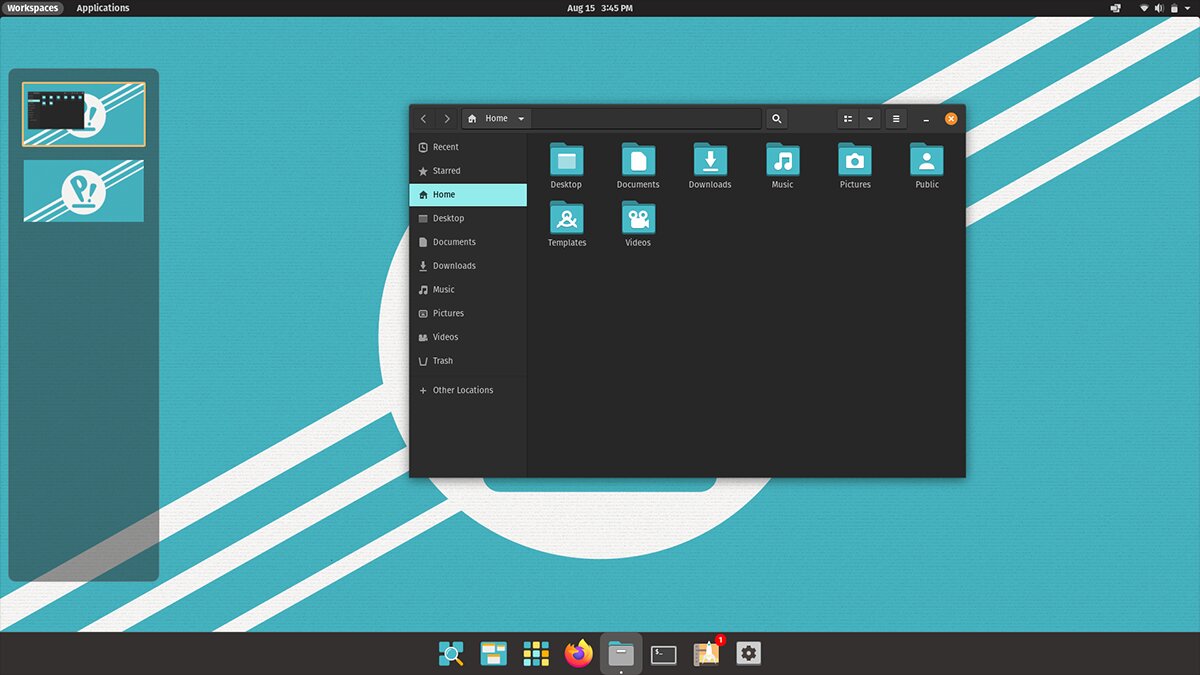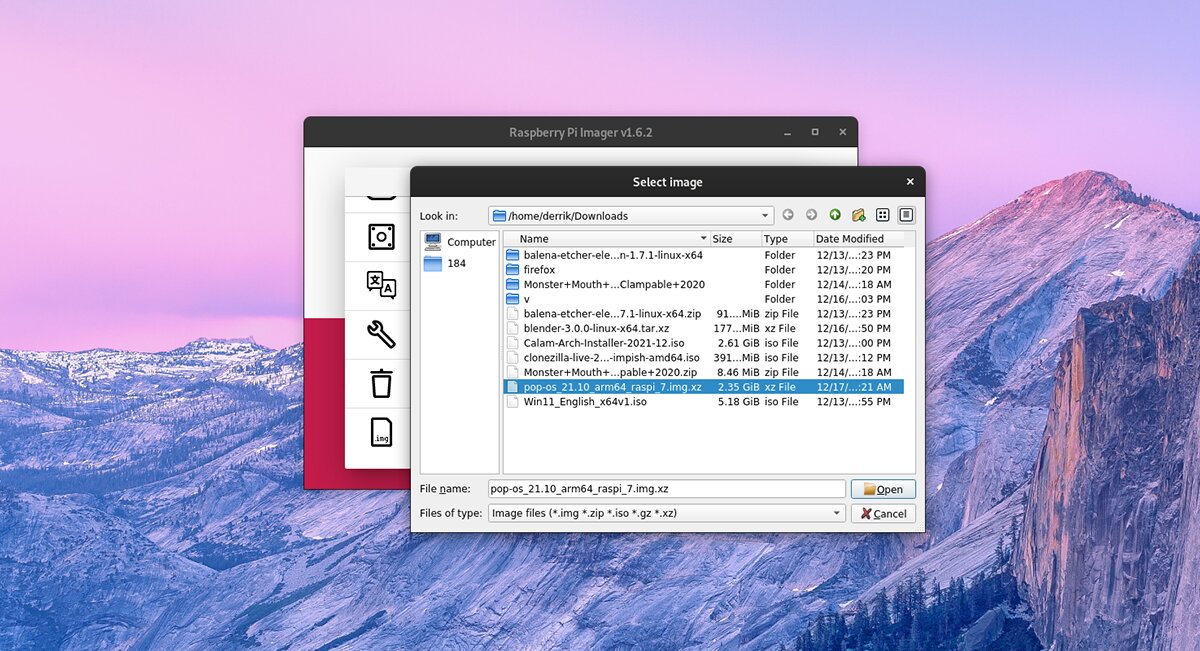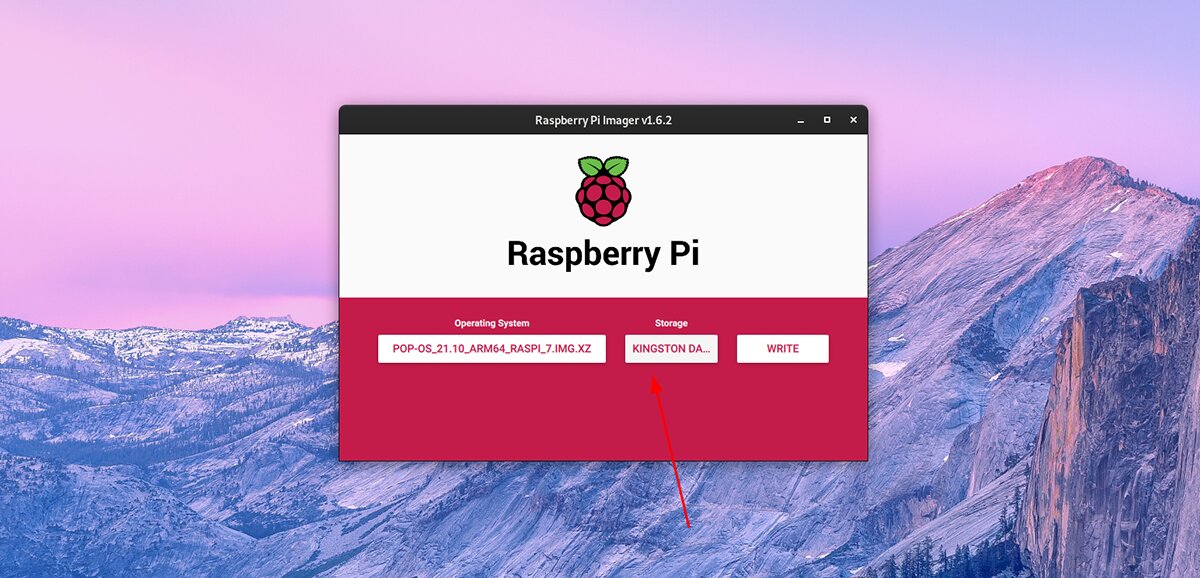Pop!_OS is now available on the Raspberry Pi 4! This guide will go over how you can set up the OS on your Raspberry Pi 4. To get started, ensure you have a speedy MicroSD Card.

Download Pop_OS for Raspberry Pi 4
Head over to the official Pop_OS website and click on the download button. Once the download button is selected, a pop-up window will appear. Locate the “Download 21.10 (Ras Pi 4)” and click on it with the mouse to download the OS.
Install Raspberry Pi Imager
The Raspberry Pi imager tool is the best way to create a Pop_OS installation for Raspberry Pi 4. Open up a terminal window on the Linux desktop to get your hands on the Raspberry Pi imager.
Unsure about how to launch a terminal window? Press Ctrl + Alt + T on the keyboard. Alternatively, you can search for “Terminal” in the app menu and open it that way.
Once the terminal window is open and ready to use, the installation can begin. Follow the instructions below to get the Raspberry Pi imager tool set up.
Note: if you use Mac OS or Windows, you’ll need to get the imager tool from the official website.
Snap package
The Snap version of the Raspberry Pi imager is easy to get working on any Linux operating system that supports Snaps. You’ll need to enable the Snap runtime on your computer to start.
Enabling the Snap runtime is easy. To do it, follow our guide on the subject. Once the runtime is set up on your computer, use the snap install command to set up the Raspberry Pi Imager tool.
sudo snap install rpi-imager
Flatpak
If Snaps aren’t for you, another way to get the Raspberry Pi imager tool is with Flatpak. Install the latest release of the Flatpak runtime on your computer to get started.
Setting up the Flatpak runtime on Linux is quite simple. To do it, head over to our guide on how to configure Flatpak. Once it is set up, use the flatpak remote-add command to set up the Flathub app store to your system.
flatpak remote-add --if-not-exists flathub https://flathub.org/repo/flathub.flatpakrepo
After adding the Flathub repository to your computer, you’ll be able to install the Raspberry Pi imager tool. Then, using the flatpak install command, set up the Raspberry Pi imager application on your computer.
flatpak install flathub org.raspberrypi.rpi-imager
Arch Linux
The Chaotic AUR software repository has a pre-built Raspberry Pi imager package available for users to install. If you wish to install this package on your computer, start by using the wget download command to download the package to your computer.
wget https://builds.garudalinux.org/repos/chaotic-aur/x86_64/rpi-imager-1.6.2-2-x86_64.pkg.tar.zst
The installation can begin after downloading the Raspberry Pi imager package to your computer. Using the pacman -U command, install the latest release of the Raspberry Pi imager tool to your Arch Linux computer.
sudo pacman -U rpi-imager-1.6.2-2-x86_64.pkg.tar.zst
Setting up Pop_OS on Raspberry Pi 4
Launch the Raspberry Pi imager tool to set up Pop_OS on the Raspberry Pi 4. Once it is open, follow the step-by-step instructions below.
Step 1: Inside the Raspberry Pi imager tool, find the “Choose OS” button and click on it with the mouse. When this button is selected, a pop-up menu will appear. Inside of this pop-up menu, there are many different options. Find the “Use custom” button and click on it.

Step 2: After selecting the “Choose OS,” button locate the “pop-os_21.10_arm64_raspi_7.img.xz” image downloaded earlier in this post and select it to add Pop_OS to the Raspberry Pi imager tool.
Step 3: Find the “Choose storage” button in the Raspberry Pi imager. Once you’ve selected the “Choose storage” button, insert your SD card into the SD card reader on your computer.

Step 4: Find the “Write” button to start the writing process. Keep in mind that the writing process will take a bit of time to complete. Once the writing process is finished, unplug the SD card from the reader.
Step 5: Plug the SD card into the Raspberry Pi 4 device. Once the card is plugged in, connect a keyboard, mouse, display, and speakers (if you require sound.)
Step 6: After connecting your keyboard, mouse, display, and speakers, connect the power cable to your Raspberry Pi 4. The Raspberry Pi 4 will power on when the power cable is connected.
Once the Raspberry Pi 4 is powered up, it should boot directly into the Pop_OS Cosmic desktop environment. From here, you’ll be able to use Pop_OS, all of the applications, and everything right out of the box.

If you wish to customize the operating system (user account, network, etc.), open up the settings and change them. However, changing these settings isn’t required.





